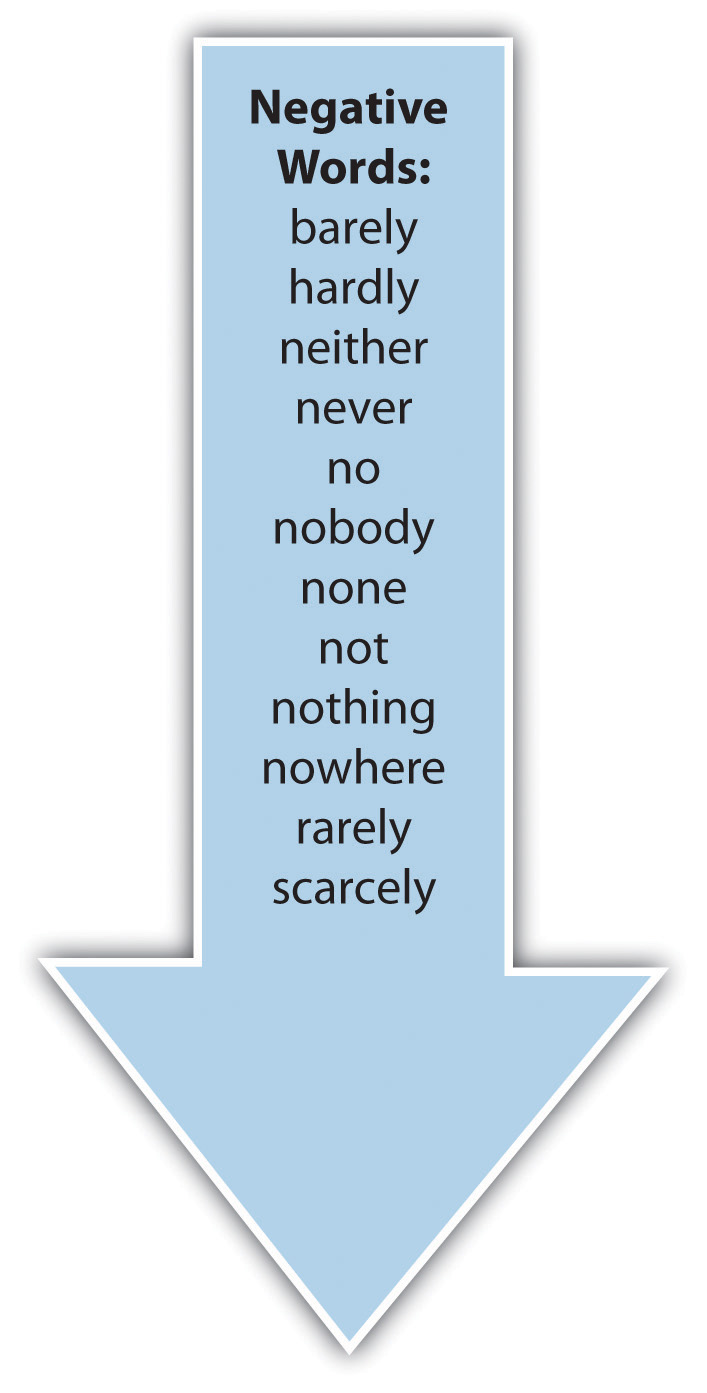Figure 21.4

To form a negative in English, you have to add a negative word to the sentence. Some of the negative words in English are shown in the blue arrow. Typically, you should place the negative word before the main verb.
I was barely awake when I heard you come home.
Kurt is not going with us.
In casual English, it is common to form contractions, or shortened combined words, with the auxiliary or linking verb and the word not. Contractions are typically not acceptable in very formal writing but are becoming more and more common in certain academic and public contexts.
I haven’t heard that before.
Jill isn’t my cousin.
Using two negative words in the same sentence changes the meaning of the negative words to positive, thus supporting the common saying “Two negatives make a positive.” Think of it as being similar to multiplying two negative numbers and getting a positive number. Double negatives are often used in extremely casual talk but never in professional or academic settings.
Correct: I didn’t hear anything.
Incorrect: I didn’t hear nothing. (The two negatives change to a positive, so the sentence technically means “I heard something.”)